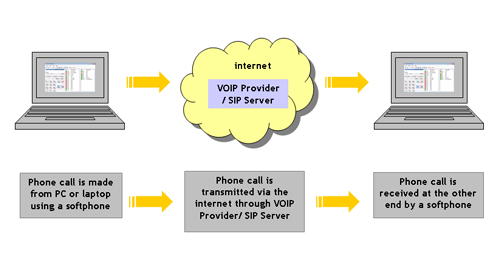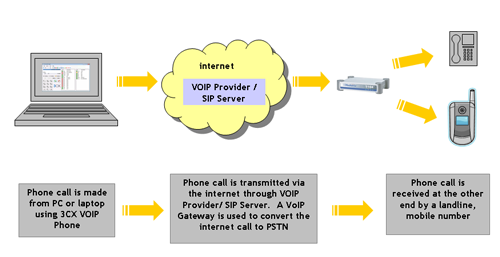IP Telephony
Internet Telephony (IP Telephony) is the term commonly used to define the transmission of phone calls over the Internet. This is regardless of whether traditional telephony equipment, computers and/or dedicated terminals take part in the calls and even if the phone calls are totally or partially transmitted over the Internet.
IP Telephony is, without doubt, one of the technological developments that are being rapidly adopted by companies nowadays. One of the main reasons of this quick migration to Internet Telephony is that it makes the integration of all means of communication, communication devices and media much easier. This way users can be in touch with anyone, wherever they are, and in real time. In short, IP Telephony allows for Unified Communications to become part of the business environment, helping companies save money and boost employees’ productivity.
How Internet Telephony Works
IP Telephony usage set-ups or scenarios are classified by the type of equipment used in making and receiving a phone call. The call can be initiated or terminated either by a PSTN (Public Switched Telephone Network) device or a computer (PC or laptop) on each side of the call; therefore, four different types of set-ups are possible:
This set-up is common with users who already have internet access and a computer with audio capability (sound card.) In this case a softphone can be used to initiate and terminate the phone calls on both sides.

In this set-up, the computer-callers may also reach the users of traditional (PSTN) telephones. To achieve this, a VoIP gateway is needed to convert the internet call into a PSTN phone call. The closer the gateway is located to the PSTN phone user, the lower the cost of the phone call will be.

This case applies to traditional telephone users who do not have access or are not interested in using their computers to make and receive phone calls and still want to profit from the savings in telephone call costs achieved by VoIP telephony. This could very well be the case of mobile phone users. In this set-up, the phone call has to go through two gateways: PSTN-to-internet and internet-to-or PSTN.
In this set-up, ordinary phone uses can reach VoIP phone users, again by the means of a VoIP gateway operator. It is exactly the reverse case of a computer to telephone phone call scenario.
Components of an IP Telephony system
- Equipment/devices:As seen in the above possible IP telephony scenarios, these devices can be traditional telephones (analog/GSM) and/ or computers (PC or notebooks) equipped with a sound card.
- VoIP gateways: These are needed if a traditional telephone is used at either end of the phone call.
- VoIP/SIP Proxy: The function of a VoIP / SIP proxy or server is to provide centralized call management functions, especially in a business environment
Sophisticated standards have been created for all these components to communicate among them. The challenge in IP Telephony so far has been to break the proprietary barrier and create phone systems where the components are not tied-in between them.
The Benefits of IP Telephony
- Increased mobility.
- Increased flexibility.
- Integration of data and voice.
- Reduction of costs.
Sophisticated standards have been created for all these components to communicate among them. The challenge in IP Telephony so far has been to break the proprietary barrier and create phone systems where the components are not tied-in between them.





